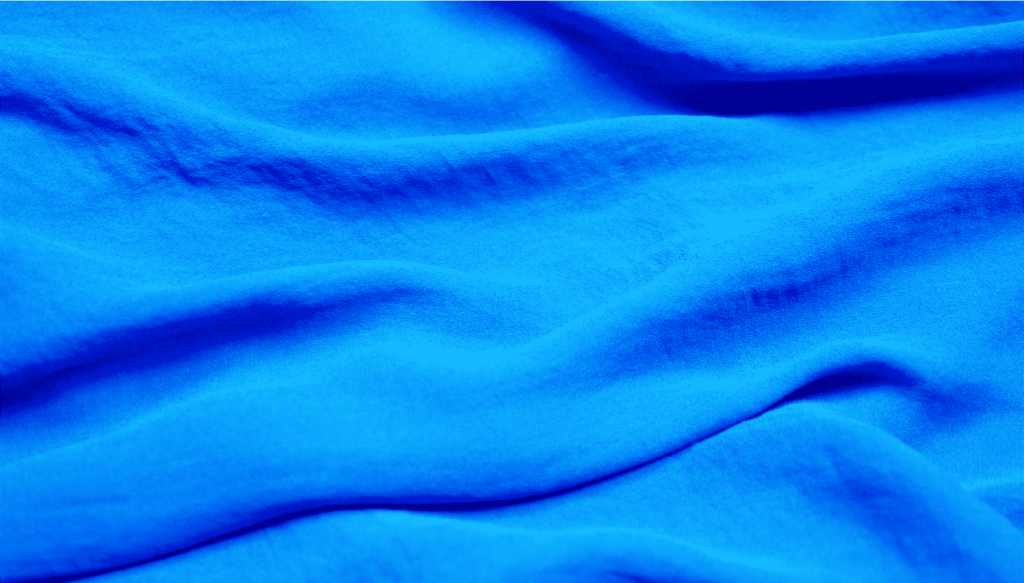Summary:
- Crepe fabric is renowned for its lightness and textured nature, characterized by small ripples in its weave;
- Within the diverse range of crepe variations, two primary categories stand out: light crepe and full-bodied crepe;
- Streamline your design process and minimize raw material waste by approving top-notch digital samples with Audaces360. Start your free trial today!

Crepe fabric is known for its impeccable fit and a vast array of textures and thicknesses, making it a top choice for dressmaking in both formal and casual fashion.
Whether in plain or printed form, crepe comes in various types such as Georgette, De Chine, Charmeuse, and Plissé. These variants are crafted using different fibers and highly twisted threads, including silk and wool.
To deepen your understanding of this versatile fabric, we’ve curated a guide that covers the main aspects you need to know about crepe. From its composition to different types and applications, this content has it all!
Read on and enjoy it!
Sumário
What is crepe fabric and what is it used for?
The term “crepe” originates from the French word “crêpe,” which signifies “curly.” This fabric possesses a distinctive grainy texture, featuring small ripples. Its unique characteristic lies in its versatility, ranging from highly frizzy and irregular textures to smoother and more uniform ones.
Due to its diverse texture options, crepe fabric is suitable for a wide range of applications. It is an excellent choice for crafting both simple and intricate garments (such as eveningwear, for example), as well as creating decorative pieces like curtains and upholstery.
One of the notable advantages of crepe fabric is its fluid aspect, making it easier to handle during the manufacturing, cutting, and sewing processes. Its pliable nature enhances the ease of working with the fabric, enabling the creation of various pieces.
Learn more: 9 fabrics with the perfect fit to use in your fashion collection
The origins of crepe fabric

The exact origin of crepe fabric remains elusive, as its production, usage, and commercialization evolved gradually over time across various cultures.
This fabric found its way into traditional costumes due to its ease of manufacturing, making it challenging to pinpoint a specific moment in history when it first emerged.
Initially, crepe fabric was predominantly worn by women as a symbol of mourning, though this tradition has since diminished.
This fabric’s popularity in the Western world gained traction during the 19th century when Courtaulds, a prominent fabric company, dominated the industry and embarked on experimenting with diverse weaving techniques to achieve different textures.
Furthermore, it is worth noting that crepe fabric encompasses numerous variations, making it a term that no longer pertains to a single type of fiber.
Learn more: What is industrial quality control in the textile business and how does it work?
What are the characteristics of this type of fabric?
Crepe fabric possesses unique characteristics attributed to its production technique. This type of fabric is created using a relatively simple method known as hard twisting, which involves twisting the threads more tightly compared to fabrics like viscose.
The distinctive effect of crepe fabric is achieved through the weaving process, alternating between “S” and “Z” spinning of the threads. This weaving technique serves as a common thread that unites all types of crepe fabrics, regardless of the type of thread used, be it natural or synthetic. This interweaving technique contributes to the vast array of fabrics falling under the “crepe” classification.
Once the weaving is complete, the fabric can undergo additional treatments and processes, such as dyeing, to further enhance its appearance. Following these treatments, the fabric is ready to be utilized in various fashion products.
Crepe fabric comes in a range of weights, from thin and lightweight to thick and heavyweight.
Each category possesses its own defining characteristics, which we explore below:
Thin crepe

In this category, you will find fabrics with fluid and delicate trims. Here are some examples:
- Crepe de Chine: This silk fabric boasts a sleek texture with a matte finish, showcasing lightness, breathability, and a luxurious feel. This distinctive appearance is attained through the utilization of tightly twisted yarns as weft threads in a simple weave arrangement.
- Crepe Satin: Compared to other crepe fabrics, satin crepe has a silkier texture. It offers a smoother and more lustrous appearance, adding an elegant touch to garments.
- Crepe Georgette: Crepe georgette is a lightweight fabric with a delicate, polished aesthetic, typically crafted from silk or synthetic silk-like fibers. It possesses a slight stretch and graceful drape. The elastic nature of crepe georgette fabric contributes to its popularity in the realm of dressmaking.
Thick crepe
Thick crepe fabric is characterized by its heavier weight and diverse weave variations, which can include polyester, elastane, and blends of organic and synthetic yarns. Within this category, notable types include the luxurious crepes Canton and Moroccan.
These fabrics offer malleability and movement and come in sparkling and satin options. They possess a silkier texture and a weight that provides an impeccable fit when draped on the body.
Check out some examples:
- Canton Crepe: From the Canton province of China, this crepe fabric draws inspiration from crepe de Chine while possessing a slightly weightier feel.
- Crepe Charmeuse: More opulent, crepe Charmeuse is a sumptuous fabric distinguished by its lustrous front surface and matte back. While traditionally crafted from silk, charmeuse is also produced by textile manufacturers using polyester and rayon.
- Moroccan Crepe: Also known as crepe marocain, it has a woven texture. This ribbed crepe fabric is commonly crafted from rayon, wool, or silk.
Learn more: Get a closer look at tulle fabric and its top types for your collection
How to incorporate crepe fabric in your fashion collection?
When creating your fashion collection, you can utilize different types of crepe fabric to add versatility and style. Each type of crepe offers unique characteristics that can enhance your designs.
Silk crepe fabric is perfect for creating high-fashion garments that do not require much elasticity. It exudes sophistication and adds a touch of beauty to any look.
For pants, skirts, and dresses, consider using crepe fabric blended with cotton (Wool crepe). This variant provides a bit more warmth, making it suitable for winter garments.
Synthetic crepe fabric is a popular choice as it is more affordable compared to other types. However, it is crucial to prioritize the quality of the synthetic crepe to avoid compromising the final pieces.
To help you navigate the different types of crepe fabric and their recommended uses, here are some examples:
- Crepe Georgette: Luxurious and often infused with elastane, making it an excellent choice for evening or formal wear.
- French Crepe: Most commonly used in lingerie.
- Crepe Charmeuse: Thicker and textured with a subtle shine, making it an excellent choice for creating elegant party pieces.
- Polyester Crepe: Suitable for blouses, skirts, and casual dresses.
- Maroccan Crepe: A firmer variant, perfect for tailored pieces like blazers and structured blouses.
- Plisse Crepe: This crepe variety is popular in eveningwear.
Learn more: Check out 3 infallible tips to assemble a fashion product mix
Enhance your garment creation and preview fabric fit with Audaces

In the fashion production chain, technology plays a vital role, offering assistance at various stages. One comprehensive solution that stands out is the Audaces360 ecosystem—an innovation that can save resources, improve results, and streamline your workflow.
With Audaces360, you can enjoy a simple, fast, and integrated approach to fashion design and production. Find out more next!
Audaces Fashion Studio
A powerful tool that enables you to test your fashion creations without wasting fabric. Audaces Fashion Studio harnesses the best of technology, providing a user-friendly three-dimensional environment for your work.
Designed to elevate the creation process, this tool offers a range of features that enhance your design experience. Some key functionalities include fit, texture and material simulation, in addition to visualizing your creations on hyper-realistic avatars.
Audaces Idea
Audaces Idea is the ultimate software solution for individuals seeking enhanced production agility and seamless communication between modeling and creation departments.
This cutting-edge program offers a comprehensive 360º view of your collection, along with invaluable features such as model testing, cost estimation, and seamless integration of information from technical drawings and tech packs.
Audaces 3D
A software solution designed to revolutionize your production process, Audaces 3D offers agility and efficiency like never before. With it, you can now effortlessly approve collections online, ensure the perfect fit of each piece, and significantly reduce the number of costly pilot pieces.
If you’re interested in expanding your knowledge about crepe and other fabrics, download our free e-book now and get more insights to make informed decisions when selecting the right fabric for your creations!
FAQ
Crepe fabric is known for its grainy texture, featuring small ripples that create a unique visual appeal. It encompasses a wide range of textures, ranging from highly frizzy and irregular to smooth and uniform.
The exact origin of crepe fabric remains uncertain, as it has been produced by various cultures throughout history. Its versatile manufacturing process has led many societies to incorporate it into their traditional costumes.
Crepe fabric is prized for its fluid and lightweight nature, making it easy to work with during the creation, cutting, and sewing of garments. Its inherent drape and movement lend themselves well to creating flowing and elegant designs.










